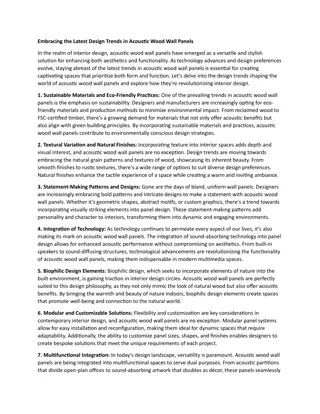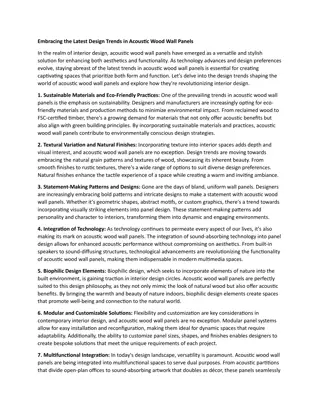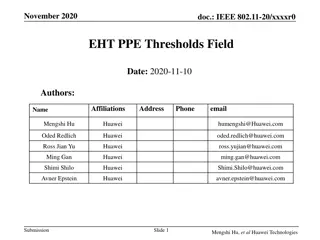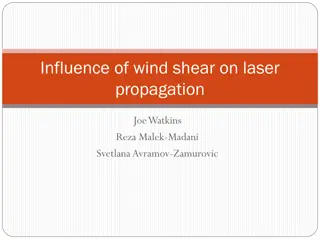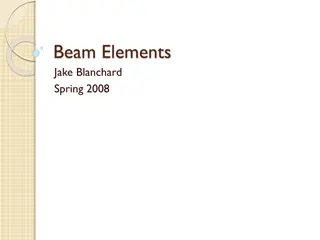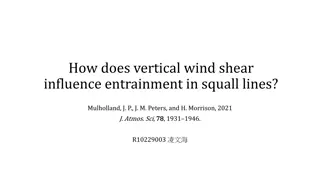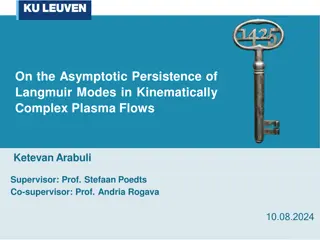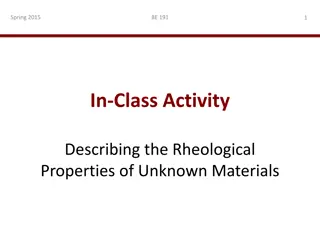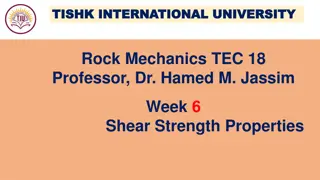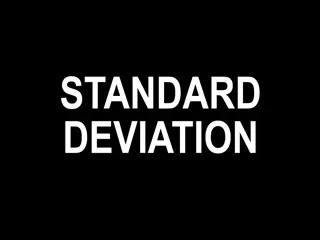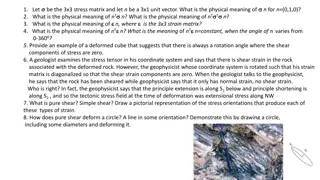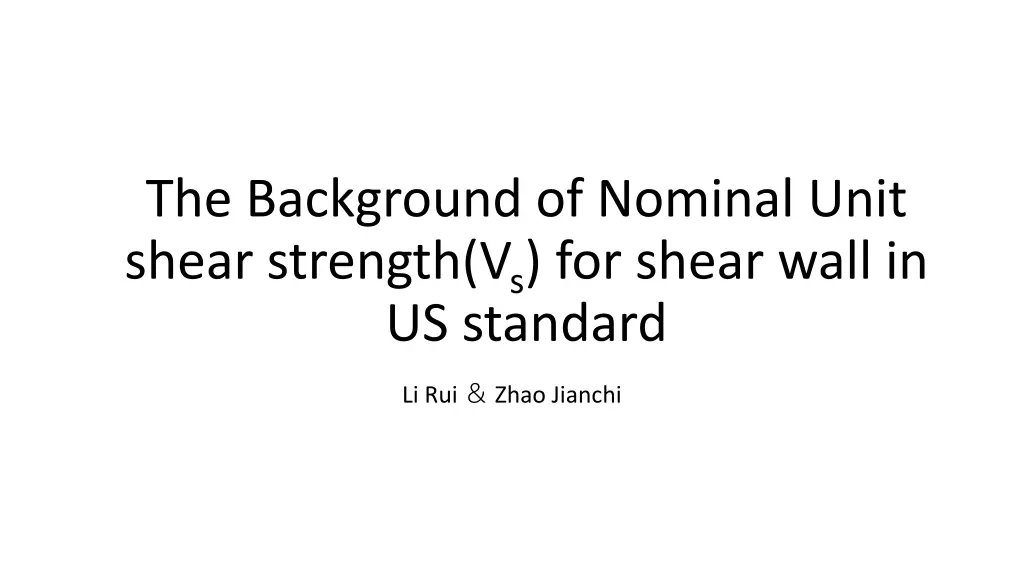
Nominal Unit Shear Strength for Shear Wall: US Standard Overview
Explore the background of nominal unit shear strength for shear walls in the US standard. Learn about the testing procedures, calculations, and references involved in determining allowable unit shear strength for design methods. Discover ASTM standards, specimen details, and example scenarios related to shear resistance testing.
Download Presentation

Please find below an Image/Link to download the presentation.
The content on the website is provided AS IS for your information and personal use only. It may not be sold, licensed, or shared on other websites without obtaining consent from the author. If you encounter any issues during the download, it is possible that the publisher has removed the file from their server.
You are allowed to download the files provided on this website for personal or commercial use, subject to the condition that they are used lawfully. All files are the property of their respective owners.
The content on the website is provided AS IS for your information and personal use only. It may not be sold, licensed, or shared on other websites without obtaining consent from the author.
E N D
Presentation Transcript
The Background of Nominal Unit shear strength(Vs) for shear wall in US standard Li Rui Zhao Jianchi
Content Introduction Specimen Test setup Test Procedure Calculation Reference
Introduction 1 plf(pound per linear foot) 14.59 N/m Vs : Tabulated Nominal Unit Shear strength Determine allowable unit shear strength Use in Allowable Stress Design method(ASD) and Load Resistance Factor Design method(LRFD)
Introduction ASTM E2126- Cyclic Load Test for Shear Resistance of Vertical Element of the lateral Force Resisting System for Buildings Vs ASTM E564- Static Load Test for Shear Resistance of Framed Walls for Building(basic test for ASTM 2126) First Major Event (FME) Ultimate displacement ( m) ASTM-American Society for Testing and Materials
Introduction Example: Typical 8-ft(2.4-mm) wall First Major Event (FME) 1. wood-framed walls with wood structural panel sheathing-Aspect ratio (h/b) of 2:1 or less. FME=0.8 in.(20mm); aspect ratio of 4:1, FME= 1.2 in(31mm) The FEM is the first significant limit state that occurs during the test. The limit state is an event demarks the two behavior states, at which time some structural behavior of the specimen is altered significantly. 2. Wood-framed walls with gypsum sheathing-Aspect ratio of 2:1 or less, FME=0.25 in(6.4mm) FME is determine by conducting monotonic load test.
Specimens-ASTM E2126 Frame Panel sheathing Diagonal bracing Bracing element fastening Type Spacing edge distance of fasteners Tested Shear wall Connection Spacing of the shear connections and hold-down connectors Sheathing Panel Attachments Attachment to the Test base
Test setup Optional horiz. joint Hold-down Anchors ASTM E2126) (
Test setup If necessary both Japan and US use the tie-rod method
Test procedure-loading method Method-A SPD method (Sequential-phased Displacement Procedure) Consists of two pattern. The first pattern consists of three phase, at displacements representing 25%, 50%, 75% of anticipated FME.
Test procedure-loading method Method-A SPD method (Sequential-phased Displacement Procedure) Each phase of the second pattern contains one initial cycle, three decay cycles, and a number of stabilization cycles. For nailed wood frame walls, three stabilization cycles is enough. The amplitude of each decay cycle decreases by 25% of initial displacement.
Test procedure-loading method Method-B ISO method ISO Displacement Schedule includes 2 patterns The first displacement pattern consists of five single fully reversed cycles at displacements of 1.25 %, 2.5 %, 5 %, 7.5 %, and 10 % of the ultimate displacement m . The second displacement pattern consists of phases, each containing three fully reversed cycles of equal amplitude, at displacements of 20 %, 40 %, 60 %, 80 %,100 %, and 120 % of the ultimate displacement m
Test procedure-loading method Method-C CUREE method CUREE involves displacement cycles grouped in phases at increasing displacement levels. Starts with a series of initiation cycles at small, equal amplitudes. Then, each phase of the loading consists of a primary cycle with amplitude expressed as a fraction of the reference deformation and subsequent trailing cycles with amplitude of 75% of the primary one.
Test procedure-loading method Method C Method A vs Method B The latest method Method A maybe applicable when Fme is the yield limit state or for testing slack systems to determine a lower bound displacement causing hysteretic energy dissipation For me now is a mystery Method B may be more applicable to systems that exhibit linear elastic behavior where FME is the strength limit state. If the ratio of m and FME is less than three, Method B may be preferable
Test procedure-loading method There are two loading methods in Japanese standard. First one is used in tie-rot type. Each phase of that procedure consists of three fully reversed cycles, associating with a respective displacement level of 1/600, 1/450, 1/300, 1/200, 1/150, 1/100, 1/75, 1/50rad. When it comes to the maximum load stress , continue loading until deformation angle comes to 1/15 or load stress decrease to 80% of the max load stress. The second method is for no tie-rot type. Each phase of this method also consists of three fully reversed cycles, and associates with a respective displacement level of 1/450, 1/300, 1/200, 1/150, 1/100, 1/75, 1/50rad. When it comes to the maximum load stress , continue loading until deformation angle comes to 1/15 or load stress decrease to 80% of the max load stress.
Calculation 1. Failure limit state---- u(in cyclic test), m(in monotonic test) 2. Strength limit state---- peak PPeak 3. Yield limit state---- yield, Pyield
Calculation Allowable strength Pa Shear strength(Vpeak) Py ?????=????? 0.2Pu( (2? 1)) ? Pa Ppeak= maximum load resisted by the specimen in the given envelope, lbf(N); and 2/3Pmax P1/120 or P2/150 L = length of specimen, ft(m) unite -----lbf/ft or N/m Pmax= maximum load resisted by the specimen in the given envelope; N; and Vpeak is the tabulated design value in US standard Pu=Ultimate strength, N ; and u = yield ratio calculated Du divided Dy multiplied by Pu/Py is the tabulated unit design value in Japanese standard
Reference ASTM E2126-11 Standard Test Method for Cyclic (Reversed) Load Test for Shear Resistance of Vertical Elements of the Lateral Force Resisting Systems of Buildings


